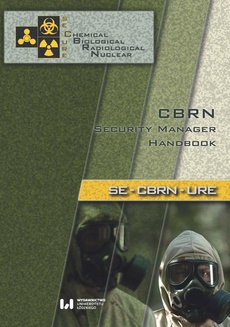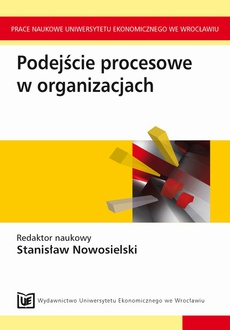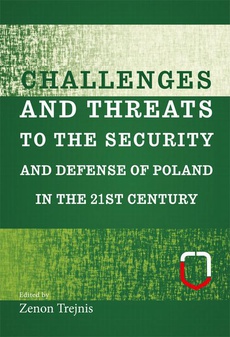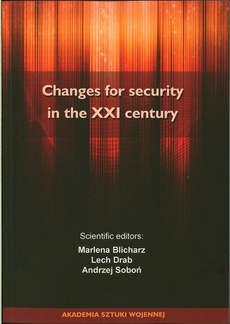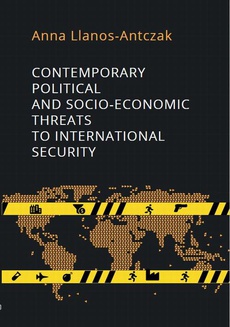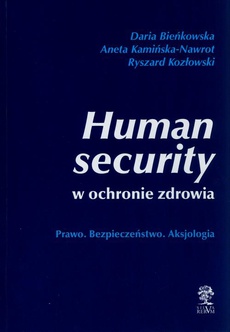POLECAMY
CBRN. Security Manager Handbook
Redakcja:
Wydawca:
Format:
ibuk
Project “Support for European Union action in the field of CBRN security managers education” SE-CBRN-URE is funded by European Commission, The Directorate-General for Migration and Home Affairs (DG HOME) from Internal Security Fund – Police, call “Implementation of the EU CBRN Action Plan, the EU Action Plan on enhancing the security of explosives and the European programme of critical infrastructure protection”. Total project budget – 684 377 Euro (EU contribution – 615 940 Euro). Grant Agreement No. HOME/2015/ISFP/AG/CBRN/4000008459
Acts of chemical, biological, radiological and nuclear (CBRN) terrorism are four new risks that the European public has to take into consideration. With the possibility of these different forms of weapons of mass destruction (WMDs) being used in acts of terrorism, an urgent need has arisen to prevent and combat their use. The use of any of the four types of CBRN weapons in acts of terrorism could open the door to the possibility of destabilization of the European Union, and lead to undermining its economic stability, public security and social integrity. An additional problem is the constant threat of explosives, especially home-made devices, which can be used by themselves or as a release mechanism for CBRN agents.
| Rok wydania | 2018 |
|---|---|
| Liczba stron | 622 |
| Kategoria | Publikacje darmowe |
| Wydawca | Wydawnictwo Uniwersytetu Łódzkiego |
| ISBN-13 | 978-83-8142-185-0 |
| Numer wydania | 1 |
| Informacja o sprzedawcy | ePWN sp. z o.o. |
Ciekawe propozycje
Spis treści
| About the project | 13 |
| Introduction to “CBRN security manager” | 19 |
| Handbook structure | 35 |
| MODULE I. MANAGEMENT AND LEGAL ASPECTS OF CBRN-E | 37 |
| 1. Selected legal issues in CBRN-E | 39 |
| 2. Crisis management | 51 |
| 3. Selected issues in forensic techniques | 69 |
| MODULE II. THE BIOLOGICAL BASIS OF CBRN | 85 |
| 1. Microbiology | 87 |
| 2. Toxicology | 141 |
| 3. Genetics | 193 |
| 4. Biological Toxins | 213 |
| 5. Radiobiology | 239 |
| 6. Methods of detecting biological materials | 271 |
| MODULE III. PRACTICAL FIELDWORK TRAINING IN THE DETECTION AND SAMPLING OF BIOLOGICAL MATERIALS | 303 |
| 1. Organisation of the biological sampling process | 305 |
| 2. Personal protective measures | 325 |
| 3. Transport of dangerous biological materials | 343 |
| 4. Methods of sampling | 355 |
| 5. Methods of biological samples field analysis | 379 |
| MODULE IV. DETECTION AND LIQUIDATION OF TOXIC CHEMICAL AGENTS | 399 |
| 1. Individual protection equipment | 401 |
| 2. Detection of chemical contaminants | 419 |
| 3. Deconmtamination of chemical agents | 461 |
| MODULE V. RADIATION AND NUCLEAR DEFENCE | 495 |
| 1. Radiation and defense against nuclear weapons | 497 |
| 2. Radiation detection and protection procedures | 529 |
| MODULE VI. THE BASIS OF SAPPER-PYROTECHNIC RECOGNITION | 537 |
| 1. Pyrotechnic Recognition | 539 |
| MODULE VII. COUNTER-TERRORISM | 549 |
| 1. Formal and legal basis for combating terrorism | 551 |
| 2. Decision-making in emergency responses to terrorist attacks | 579 |
| 3. Terrorism as a threat to public order | 593 |
| 4. Anti-terrorist actions involving CBRN materials | 617 |

